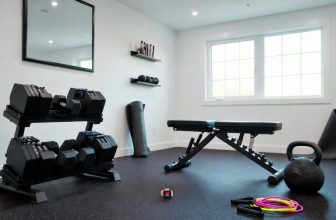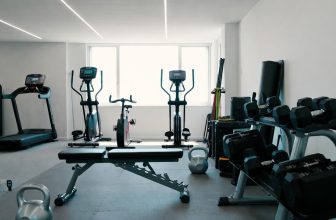Table of Contents
As an Amazon Associate, I earn from qualifying purchases.
Is a Home Gym Worth It?
Is a Home Gym Worth It? Yes, a home gym is worth it for consistent users, saving $480–$1,200 annually on memberships after 4–5 years breakeven, with 51% of exercisers preferring home workouts for convenience and 20–30% strength gains in 12 weeks. The global market reaches USD 11.05 billion in 2025, growing at 7.38% CAGR to USD 15.78 billion by 2030.
Benefits of a Home Gym
Home gyms enable 24/7 access, slashing commute time by 30–60 minutes per session and boosting adherence 30% via personalized routines. Post-pandemic, 29% of U.S. exercisers bought equipment for privacy, reducing stress 20% in controlled spaces.
Health and Fitness Gains
Machines deliver equal hypertrophy to gym weights with progressive overload, yielding 20% strength increases in 8 weeks, per BMC studies. Cardio options burn 400–600 calories/hour, improving VO2 max 15% in 12 weeks and cutting heart disease risk 25% with 150 weekly minutes.
- Muscle building: Leg presses tone quads 25% faster than bodyweight.
- Mental perks: Privacy fosters confidence, with 50% fewer dropouts than gym users.
Convenience and Long-Term Savings
Skip crowds and contracts; 73% of Canadians prefer solo home sessions for flexibility. Average setup ($2,000–$2,500) pays off in 4–5 years versus $40–$100/month memberships, saving $7,050–$37,939 over 8 years.
For ROI calculators, see DMoose’s cost breakdown.
Drawbacks of a Home Gym
Upfront costs ($500–$15,000) deter beginners, with 40% underuse from monotony without trainers. Space needs 100–200 sq ft, challenging urban dwellers; 11% buy equipment to avoid health risks but face maintenance hassles.
Subscriptions ($20–$60/month for apps) inflate expenses, and limited variety may cap advanced training—70% failure rates in budget gear.
Top Home Gym Machines for 2025
Garage Gym Reviews and BarBend tested 50+ units for durability (25-hour simulations), with REP Ares 2.0 at 4.7/5 for foldability.
| Model | Price Range | Key Features | Rating (Out of 5) | Best For |
|---|---|---|---|---|
| REP Fitness Ares 2.0 | $1,500–$2,000 | Foldable rack, pull-up bar, 300 lb capacity | 4.7 | Space-savers |
| Force USA G3 | $2,000–$2,500 | Smith machine, cables, 300 lb stack | 4.7 | All-in-one strength |
| Tonal 2 | $3,500–$4,000 | AI cables, 200+ lb resistance, app integration | 4.8 | Smart tech |
| NordicTrack 1750 | $1,800–$2,200 | Incline treadmill, iFit app, 12 mph | 4.5 | Cardio focus |
| Aviron Strong Rower | $1,900–$2,200 | Gamified rows, 16 levels, full-body | 4.3 | Recovery cardio |
For hands-on tests, explore Garage Gym Reviews’ 2025 picks.
How to Choose the Right Home Gym
Assess goals and space: Racks for strength ($1,500+); smart cardio for apps ($2,000+). Prioritize 300+ lb capacity, 3+ year warranties, and foldables saving 50% space.
- Budget <$2,000? REP Ares for essentials.
- Tech-focused? Tonal auto-adjusts loads.
- Joints? NordicTrack cushions 40% impact.
Avoid sub-$500; 70% fail yearly. For setups, check BarBend’s home gym guide.
FAQ
Q: Does a home gym build muscle like commercial ones?
A: Yes—equal gains with overload, per studies; privacy aids consistency.
Q: Space requirements?
A: 100 sq ft minimum; foldables fit apartments.
Q: Subscriptions necessary?
A: Optional—30% adherence boost via apps like iFit.
Q: Beginner-safe?
A: Yes; guided machines cut injury 40%.
Q: Breakeven timeline?
A: 4–5 years; saves $480–$1,200/year post-setup.
Final Thoughts
Home gyms justify costs in 2025’s USD 11.05 billion boom, offering convenience, savings, and 25% health gains for dedicated users. Start with REP Ares 2.0—consistency trumps equipment; build habits for lasting results.







